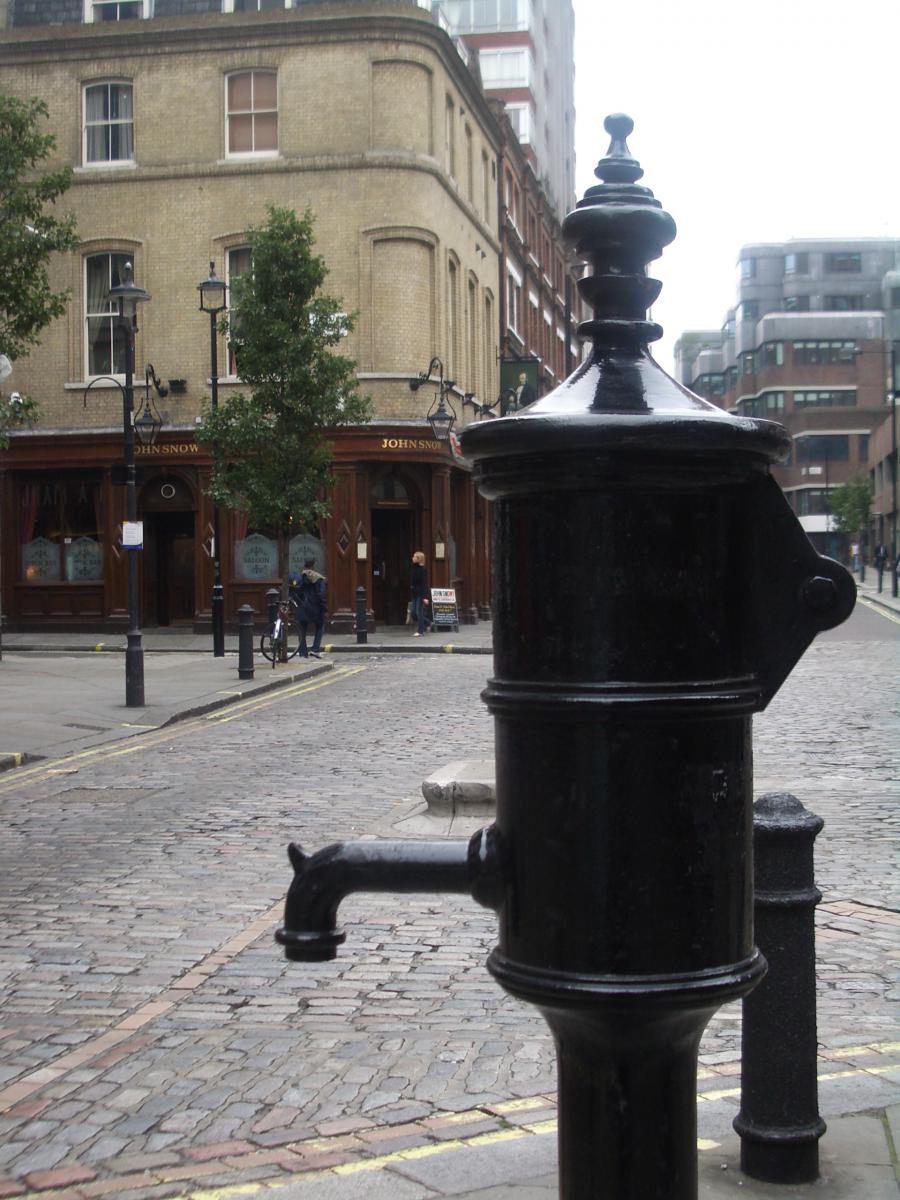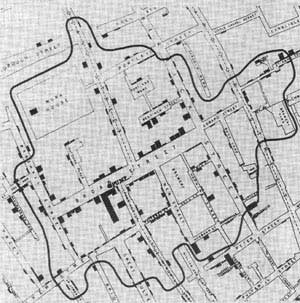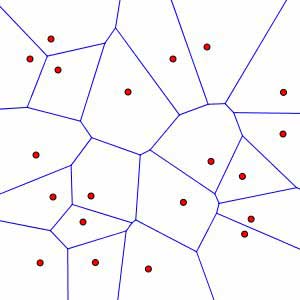
Uncovering the cause of cholera

The John Snow memorial and pub in London
London, September, 1854. A cholera outbreak has decimated Soho, killing 10% of the population and wiping out entire families in days. Current medical theories assert that the disease is spread by "bad air" emanating from the stinking open sewers. But one physician, John Snow, has a different theory: that cholera is spread through contaminated water. And he is just about to use mathematics to prove that he is right.
London was the biggest city the world had ever seen in the nineteenth century. And along with the brilliance of its architecture and its technological advances showcased in the Great Exhibition in 1851, it was also filthy. No sewerage system meant that waste was thrown into cesspits or open sewers that regularly contaminated drinking water supplies. Doctors of the day blamed the regular outbreaks of disease in the city on the stench, believing the miasma theory of disease, which held that such disease was spread through "bad air".
However, the physician John Snow believed that diseases such as cholera were spread by contaminated water. He alerted the health authorities about his theory in 1849 but was largely ignored, in part because of squeamishness about the fecal-oral route of transmission that was involved.
When Snow was investigating the terrible cholera outbreak in Soho in September 1853 he recognised how the disease was spreading and realised the data would prove that his theory of water-bourne transmission of the disease was correct.

John Snow's map. Each bar represents a death at an address. The curve marks points at equal distance from the Broad Street pump and another pump.
Snow created an ingenious map that dramatically showed the geographic spread of deaths in the outbreak. Each bar on the graph represents a death at that address, showing as many as 18 people dying in particular households. This representation of the data shows that most of the deaths were tightly clustered in a specific area, crowded around the water pump at 40 Broad Street (now Broadwick Street) in Soho. Snow's research had led him to believe the Broad Street pump was the source of the disease, and this data backed up that theory. However, there were other pumps nearby, how could he show that it was most likely that this particular pump was the source?
His next ingenious step was to represent the time it took to travel to the Broad Street pump on his map and to calculate who was most likely to use each water pump in the area. Snow drew a curve on the map that marked the points where the Broad Street pump was at equal walking distance from neighbouring water pumps. If you live inside this curve the Broad Street pump is your nearest source of water. Almost all the deaths marked on the map lay inside this curve and anecdotal evidence explained the few cases that did not.
This brilliant mathematical device is called a voronoi diagram. Suppose you have a number of sites (such as the water pumps in Snow's maps) spread out over an area you can map. The dots on a voronoi diagram represent these sites and the points on the edges on the diagram are exactly those points that are equidistant between two (or more if you are on a corner of a region) sites. The edges divide the diagram up into regions, or cells that enclose all the points that are closest to the site in that particular region. Voronoi diagrams are widely used to study spatial relationships, for example to study competition between plant species and to model economic markets.

A voronoi diagram. Image by David Austin
This convincing mathematical analysis of the cholera outbreak in Soho convinced the authorities that Snow's theory that the disease was transmitted through water was correct. The handle to the Broad Street pump was removed and the outbreak died away, though Snow himself said that by that time the disease was already on the wane as people had already fled the area.
Snow's mathematical evidence that cholera was water-bourne is one of the founding moments of epidemiology and the use of mathematics to understand disease, one of the greatest advances in medicine that has saved millions of lives. Some of the great breakthroughs in medicine, such as understanding the link between malaria and mosquitoes were discovered using mathematical models of the spread of the disease. Snow's work paved the way for the revolutionary sewerage and sanitation systems in London which is still in use today.
Further reading
You can read more about voronoi diagrams, including how to construct them, in an excellent article from the American Mathematical Society. You can find out more applications of voronoi diagrams from Geometry in Action and can learn more about John Snow from the UCLA Department of Epidemiology.
To find out more about the maths of infectious diseases, have a look at our Do you know what's good for you package.
Comments
Anonymous
I did a podcast from that pub a few years back - always nice to ponder cholera over a pint...
Tracy Peevy
It should be 1854.